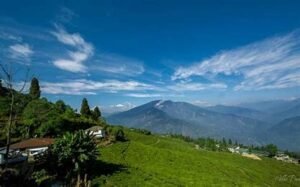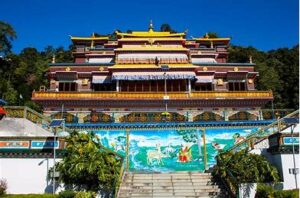Introduction
The Wangala Festival is a traditional harvest festival celebrated by the Garo tribe, an indigenous community residing primarily in the hills of Meghalaya, India. Also known as the “100 Drums Festival,” it marks the end of the agricultural year with vibrant rituals, traditional music, and dance. The festival is a way of thanking Misi Saljong, the Sun God, for a bountiful harvest.
Historical Roots
The origins of the Wangala Festival trace back centuries. It is deeply rooted in the Garo tribe’s agrarian lifestyle, reflecting their strong connection to nature and agriculture. The festival has evolved over time but remains a crucial part of the community’s cultural heritage, preserving traditions passed down through generations.
Language and Communication
The Garo people primarily speak Garo, a Tibeto-Burman language. During the Wangala Festival, communication extends beyond verbal language. It includes non-verbal cues such as rhythmic drumming, dancing, and symbolic rituals. This cultural expression serves as a mode of storytelling and a means to strengthen community bonds.
Festivals and Celebrations
Wangala is celebrated annually, usually in October or November, after the harvest. The festival spans several days, featuring various rituals such as Rugala and Sasat Sowa. Rugala is a ceremony where freshly harvested crops are offered to Misi Saljong, while Sasat Sowa involves rituals invoking blessings for peace and prosperity.
Arts, Crafts, and Music
Traditional music plays a significant role in Wangala. The sound of the “Dama” (drum) is central to the festivities. Hundreds of drums are beaten rhythmically, accompanied by indigenous instruments like flutes and gongs. The festival also showcases traditional Garo crafts, including woven fabrics and bamboo art.
Cuisine and Culinary Traditions
Food is an essential aspect of the Wangala Festival. Special dishes are prepared using freshly harvested crops. Pork, chicken, rice, and indigenous vegetables are commonly featured in the celebratory meals. Sharing food signifies community unity and gratitude.
Attire and Ornamentation
During Wangala, participants wear traditional Garo attire. Men often dress in “Gando” (loincloth) and “Dokmanda” (waistcoat), while women adorn themselves in “Dakmanda” (wrap-around skirt) with intricate patterns. Jewelry made from beads and silver is also worn, enhancing the festive appearance.
Beliefs and Values
The Garo tribe believes in a harmonious relationship between humans, nature, and the spiritual world. Wangala embodies these values by honoring Misi Saljong for his generosity. It is a time for expressing gratitude and seeking blessings for the future.
Customs and Etiquette
Etiquette during the festival reflects respect for traditions and elders. Rituals are conducted with precision, and participation is open to all members of the community. Visitors are welcomed warmly, but adherence to customs is expected.
Architecture and Symbols
The Garo community’s architecture reflects their traditional lifestyle. Homes are built with bamboo, wood, and thatch, symbolizing harmony with nature. During Wangala, symbolic structures and decorations are erected to enhance the festive atmosphere.
Oral Traditions and Storytelling
Storytelling is an integral part of Wangala. Elders share folktales, myths, and historical narratives, preserving cultural knowledge. These oral traditions reinforce communal identity and impart moral lessons to the younger generation.
Interactions with Nature
The Garo tribe’s agrarian lifestyle fosters a deep connection with nature. Wangala reflects this bond by celebrating the harvest and acknowledging the role of natural resources in their survival and well-being.
Challenges and Preservation
Despite modernization, the Garo tribe strives to preserve its cultural heritage. Efforts are made to promote the Wangala Festival as a way to sustain traditional practices and educate younger generations about their roots.
Contributions to Society
The Garo tribe’s cultural expressions contribute to the diverse cultural landscape of Northeast India. Their customs, art forms, and traditional knowledge offer valuable insights into sustainable living and communal harmony.
Connection to Northeast India
Wangala is a significant cultural event in Meghalaya and the broader Northeast India region. It fosters unity among different communities while highlighting the unique identity of the Garo tribe.
Conclusion and Call to Action
The Wangala Festival is more than just a celebration. It is a testament to the Garo tribe’s resilience, cultural pride, and harmonious relationship with nature. As we learn about this rich tradition, it is essential to support efforts aimed at preserving the heritage of the Garo tribe for future generations. Understanding and appreciating such festivals can foster greater cultural awareness and respect.
Summary
The Wangala Festival of the Garo tribe is a vibrant harvest festival that honors the Sun God, Misi Saljong. With its roots deeply embedded in the agrarian lifestyle of the community, it showcases various aspects of Garo culture, including music, dance, cuisine, attire, beliefs, and storytelling. Despite challenges posed by modernization, the Garo people continue to celebrate Wangala with pride and dedication, ensuring its survival for generations to come.




